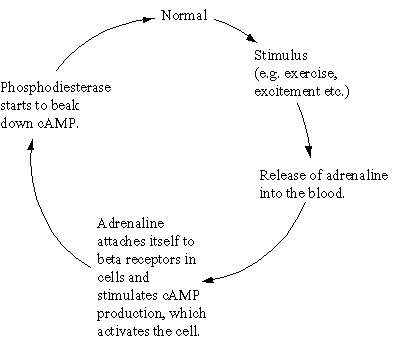
Caffeine molecule (not to scale)

by
Chris Freundel
1998
''Caffeine: a bitter alkaloid C8 H10 N4 O2 found especially, in coffee, tea, and kola nuts and used medicinally as a stimulant and diuretic'' (Multipedia)
|
Tea (per 8 oz) |
Coffee (per 8 oz) |
Soft drink (per 8 oz) |
Chocolate (per 8 oz) |
|---|---|---|---|
|
|
Coca-Cola 30 |
Cocoa beverage 3-32 |
|
|
Dr. Pepper 26 |
Chocolate milk beverages 2-7 |
|
|
Pepsi-Cola 26 |
Dark Chocolate 40-280 |
|
Instant 20-45 |
Instant 85 |
Diet Pepsi-Cola 24 |
Milk Chocolate 8-120 |

The negative feedback loop for caffeine look the same, but the stimulus is not exercise or excitement etc., but caffeine.
| HOME | Photos | Buffy | Survey | OS/2 page | OT page |
| Star Trek | The Crow | Music | Simpsons results | Caffeine | MOSH page |